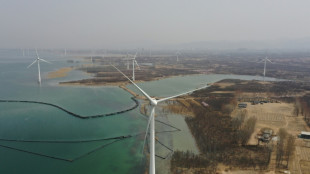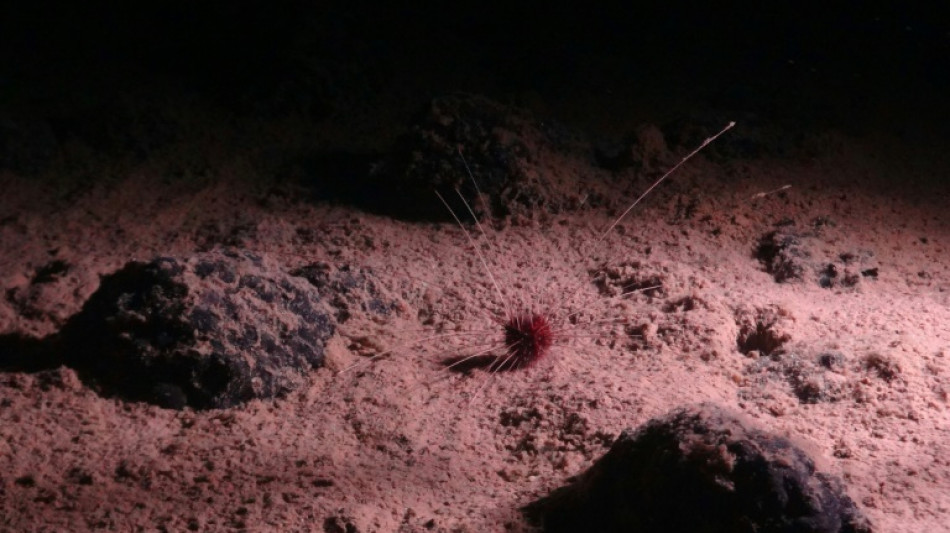
-
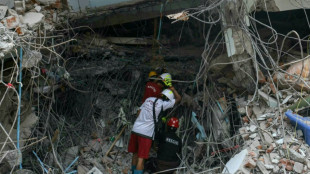 Fears and hopes at collapsed Mandalay school
Fears and hopes at collapsed Mandalay school
-
Bayern survive St. Pauli scare to stay on course for title

-
 Simmons takes wind-hit Tour of Catalonia stage six victory
Simmons takes wind-hit Tour of Catalonia stage six victory
-
Bourgeois inspires France to Six Nations rout of Scots

-
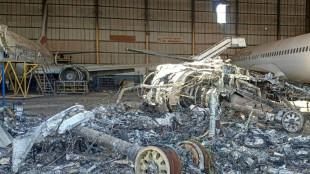 Sudan army says retakes Khartoum-area market from paramilitaries
Sudan army says retakes Khartoum-area market from paramilitaries
-
Eze leads Crystal Palace into FA Cup semi-finals

-
 Guinea ex-dictator freed from jail after 2009 massacre pardon: junta
Guinea ex-dictator freed from jail after 2009 massacre pardon: junta
-
Martinez punishment 'out of Flick's hands' as Barca focus on title

-
 Hundreds of thousands join Istanbul protest rally
Hundreds of thousands join Istanbul protest rally
-
Australian sprinting prodigy Gout Gout upstaged in 200m

-
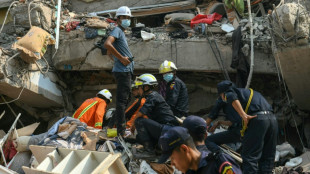 'We need aid': rescuers in quake-hit Myanmar city plead for help
'We need aid': rescuers in quake-hit Myanmar city plead for help
-
Protesters flock to mass opposition rally in Istanbul

-
 Are women allowed their own dreams, wonders Chimamanda Ngozi Adichie
Are women allowed their own dreams, wonders Chimamanda Ngozi Adichie
-
Deadly earthquake forces Thai patients into sports hall

-
 'Everyone was screaming': quake shocks Thailand tourists
'Everyone was screaming': quake shocks Thailand tourists
-
Rallies grow in South Korea as court weighs president's fate

-
 Scientists explain why Myanmar quake was so deadly
Scientists explain why Myanmar quake was so deadly
-
Turkey opposition calls mass rally in Istanbul

-
 Chapman blasts ton as New Zealand win first Pakistan ODI by 73 runs
Chapman blasts ton as New Zealand win first Pakistan ODI by 73 runs
-
French chefs quake as Michelin prepares new guide

-
 Mike Leigh on the 'hard truths' of film, happiness and World War III
Mike Leigh on the 'hard truths' of film, happiness and World War III
-
Myanmar quake toll passes 1,000 as rescuers dig for survivors

-
 Lights out: Bali guards protect island's day of silence
Lights out: Bali guards protect island's day of silence
-
Myanmar-Thailand quake toll passes 700 as rescuers dig for survivors
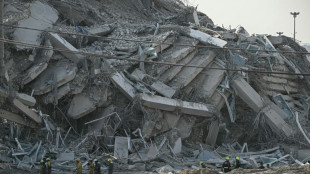
-
 UK gallery to return Nazi-looted painting to heirs of Jewish collector
UK gallery to return Nazi-looted painting to heirs of Jewish collector
-
UK dreams of US trade deal before Trump tariffs

-
 'Blink of an eye': survivor tells of Bangkok skyscraper collapse horror
'Blink of an eye': survivor tells of Bangkok skyscraper collapse horror
-
The hand of GOAT, Mensik wins with Messi touch

-
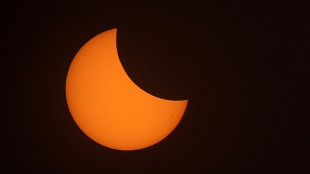 Partial solar eclipse to cross swathe of Northern Hemisphere
Partial solar eclipse to cross swathe of Northern Hemisphere
-
Tunisian startup turns olive waste into clean energy

-
 Guinea ex-dictator sentenced for 2009 massacre pardoned: junta
Guinea ex-dictator sentenced for 2009 massacre pardoned: junta
-
Chapman ton lifts New Zealand to 344-9 in first Pakistan ODI

-
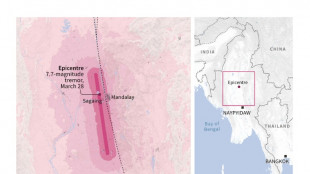 Myanmar quake: what we know
Myanmar quake: what we know
-
Vu fires 64 to seize lead at LPGA Ford Championship

-
 Resurgent Liu wins women's figure skating world title
Resurgent Liu wins women's figure skating world title
-
Djokovic to face Mensik with 100th title within reach

-
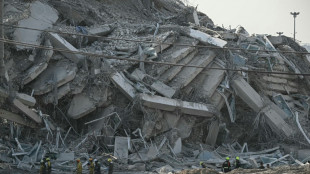 Rescuers dig for survivors after huge quake hits Myanmar, Thailand
Rescuers dig for survivors after huge quake hits Myanmar, Thailand
-
South Korea firefighters deploy helicopters as wildfires reignite
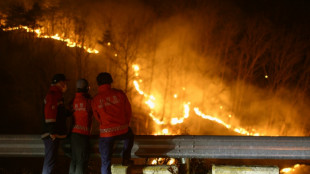
-
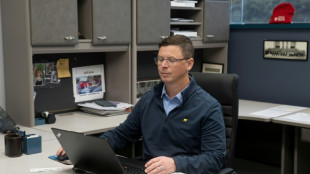 'Defiant' Canada autoworkers vow to fight tariff layoffs
'Defiant' Canada autoworkers vow to fight tariff layoffs
-
Performance, museums, history: Trump's cultural power grab

-
 Russian-born 12-ranked Kasatkina says to play for Australia tennis
Russian-born 12-ranked Kasatkina says to play for Australia tennis
-
WyHy Celebrates Grand Opening of New Lyman Branch

-
 New to The Street Show #639 Premieres Nationwide on Bloomberg Television, March 29 at 6:30 PM EST Featuring BioVie, Roadzen, Tonix Pharma, and eXoZymes Inc.
New to The Street Show #639 Premieres Nationwide on Bloomberg Television, March 29 at 6:30 PM EST Featuring BioVie, Roadzen, Tonix Pharma, and eXoZymes Inc.
-
Wallabies back Jorgensen suffers serious ankle injury

-
 Academy apologizes after stars say it 'failed to defend' Palestinian filmmaker
Academy apologizes after stars say it 'failed to defend' Palestinian filmmaker
-
UN rights chief demands end to 'horrific suffering' in Ukraine

-
 Djokovic oozing confidence ahead of century bid
Djokovic oozing confidence ahead of century bid
-
US regulators to investigate Disney diversity efforts

-
 Elon Musk says xAI startup buying X platform
Elon Musk says xAI startup buying X platform
-
'Jail or death': migrants expelled by Trump fear for their fate


Deep sea mining impacts visible for 'many decades'
Scientists said they have seen the first signs of life returning to deep sea mining tracks carved into the abyssal seabed more than four decades ago, but warned on Wednesday that full recovery may be "impossible".
The new research, published in the journal Nature, comes as countries argue over the creation of the world's first mining code on deep sea extraction at a meeting of the International Seabed Authority (ISA) in Kingston, Jamaica.
Scientists and campaigners have long insisted that future industrial-level mining will threaten marine ecosystems.
Risks range from species extinctions and damage to the ocean food web, to the potential for exacerbating climate change by churning up sediment that stores planet-heating carbon.
In the latest research, scientists in Britain assessed the lasting impact of one of the oldest known mining tracks in the vast Clarion-Clipperton Zone (CCZ), stretching between Hawaii and Mexico in international waters.
At depths of more than 4,000 metres (13,000 feet), the seabed here is scattered with metal rich rocks known as "nodules" and is home to a huge number of strange and rare animals almost entirely unknown to science.
A 1979 test in the CCZ left a wide strip of seabed cleared of nodules and framed by deep tracks eight metres (26 foot) apart made by the mining machine.
In 2023, scientists surveyed the site and found these marks in the seafloor remained clearly visible.
"The numbers of many animals were reduced within the tracks but we did see some of the first signs of biological recovery," said lead author Daniel Jones of the National Oceanography Centre.
While small and more mobile creatures were seen within the mining area, larger-sized animals that are fixed to the seafloor were still "very rare", he said.
The sediment plumes kicked up by the machines where not found to have had a lasting impact, according to the research.
The authors said that while more modern equipment could be designed to limit the impact on ocean wildlife, the likely scale of any mining operations if they went ahead meant "visible physical impacts of the collection can be assumed to last for at least many decades".
They added that a full return of life in affected regions "may be impossible" with the removal of the nodules, which are themselves a habitat for marine animals.
- Spies to smartphones -
The research marks "the longest term assessment of a deep sea mining track", Jones told reporters earlier this month.
Jones trawled the archives to pinpoint the location of the 1979 test, which was carried out following a CIA plot to recover a Russian nuclear submarine -- using deep-sea mining as a cover story.
The CIA then leased their ship for real deep-sea mining, according to Jones.
He said the 1979 test, carried out by private firms, was to see if harvesting the nodules was technically feasible and was "much smaller than a true mining event would look like".
After that, interest and funding fizzled out.
But recent years have seen renewed interest in exploiting the potato-sized nodules, which are thought to have formed over millions of years and contain metals like cobalt and nickel, which are used in technologies such as smartphones and rechargeable batteries.
There are estimated to be around 21 billion tonnes of nodules on the seabed of the CCZ.
"Our results don't provide an answer to whether deep-sea mining is societally acceptable, but they do provide the data needed to make better informed policy decisions," said co-author Adrian Glover from Britain's Natural History Museum.
He added that it could help in creating protected areas and inform monitoring efforts.
P.M.Smith--AMWN

